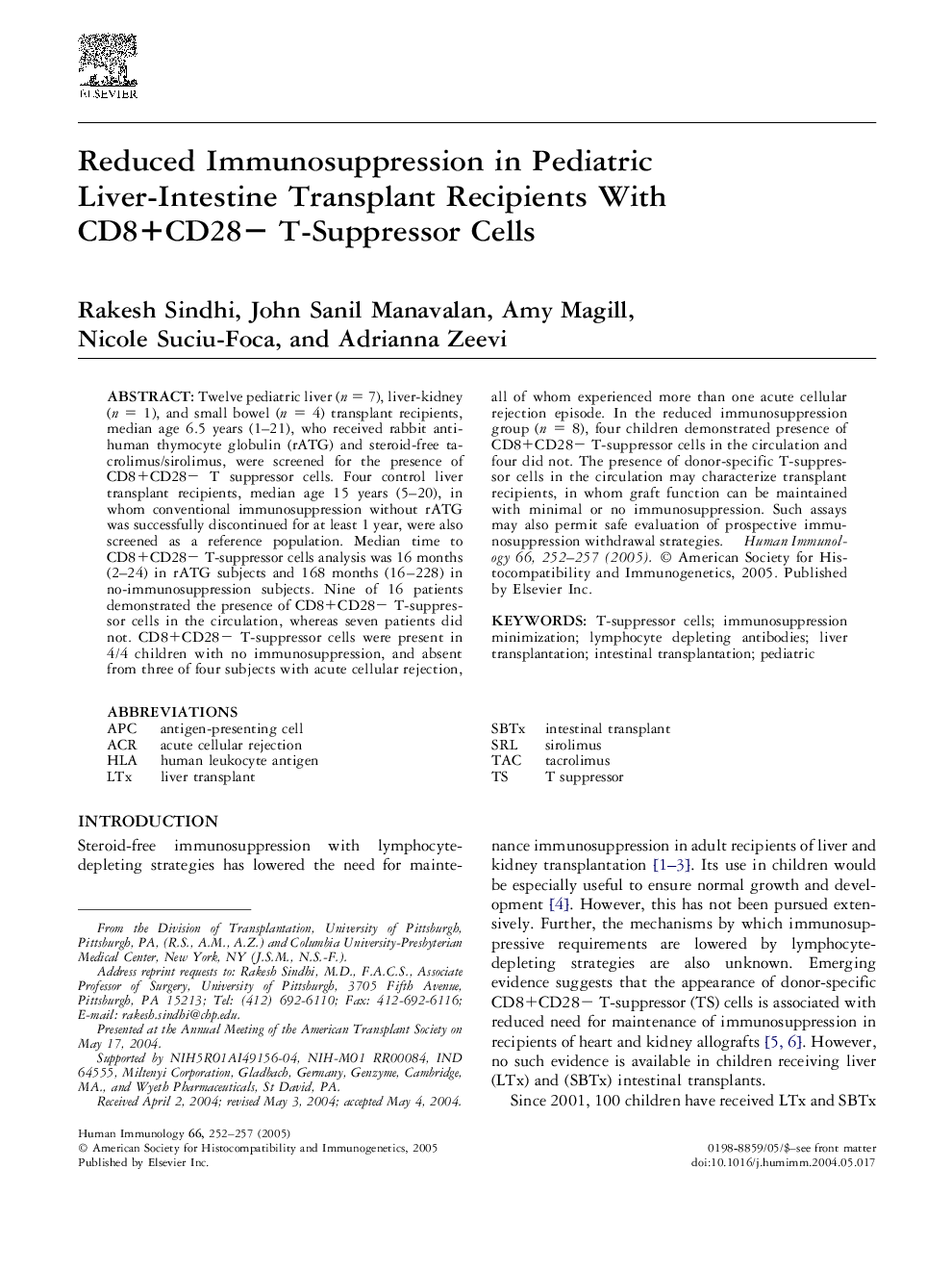| Article ID | Journal | Published Year | Pages | File Type |
|---|---|---|---|---|
| 9264783 | Human Immunology | 2005 | 6 Pages |
Abstract
Twelve pediatric liver (n = 7), liver-kidney (n = 1), and small bowel (n = 4) transplant recipients, median age 6.5 years (1-21), who received rabbit anti-human thymocyte globulin (rATG) and steroid-free tacrolimus/sirolimus, were screened for the presence of CD8+CD28â T suppressor cells. Four control liver transplant recipients, median age 15 years (5-20), in whom conventional immunosuppression without rATG was successfully discontinued for at least 1 year, were also screened as a reference population. Median time to CD8+CD28â T-suppressor cells analysis was 16 months (2-24) in rATG subjects and 168 months (16-228) in no-immunosuppression subjects. Nine of 16 patients demonstrated the presence of CD8+CD28â T-suppressor cells in the circulation, whereas seven patients did not. CD8+CD28â T-suppressor cells were present in 4/4 children with no immunosuppression, and absent from three of four subjects with acute cellular rejection, all of whom experienced more than one acute cellular rejection episode. In the reduced immunosuppression group (n = 8), four children demonstrated presence of CD8+CD28â T-suppressor cells in the circulation and four did not. The presence of donor-specific T-suppressor cells in the circulation may characterize transplant recipients, in whom graft function can be maintained with minimal or no immunosuppression. Such assays may also permit safe evaluation of prospective immunosuppression withdrawal strategies.
Keywords
Related Topics
Life Sciences
Immunology and Microbiology
Immunology
Authors
Rakesh Sindhi, John Sanil Manavalan, Amy Magill, Nicole Suciu-Foca, Adrianna Zeevi,
